 The launching of modern technologies as part of the learning process will help in enhancing the children’s education in poor provinces such as Samar. With the computers that were given by Intel Technology Philippines, there were four public schools in Samar’s two cities now have computer laboratories with connections in Internet that encourage the students to study further.
The days are gone when instructors have to pen lessons on the chalkboard, spread out a Manila paper in order to present picture cards or show a graph. With just a press of a key or a tick on a keyboard in a Powerpoint presentation, the illustration or text would right away come out on a screen. The schools in Samar that received the Intel-given computers are the San Policarpo National High School, Samar National High School in Catbalogan City, Oquendo National High School, and Calbayog City National High School. These schools are in Calbayog City, approximately 180 kilometres north of Tacloban City.
The Samar National High School got 50 computers the previous year from the Intel Philippines through its programme ‘Intel Teach’. The Oquendo National High School got 60 computers while the San Policarpo National High School and Calbayog City National High School got 55 computers each. Ma. Teresa L. Pacis, external communications manager for corporate affairs of Intel Technology Philippines Inc. said, “Intel Teach, which we implement globally, is part of the corporate social responsibility program [of Intel]”.
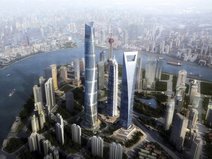 Yesterday, a major science and technology official vowed to speed up the construction of digital cities across China. The director of Science and Technology and the Ministry of Construction, Lai Ming, confirmed at a Beijing press conference that ‘informatisation’ is an essential part of the attempt to make China into a well-off, innovative, harmonious and modern nation. Lai asserted that building digital cities is introducing information technologies to city planning, infrastructure construction, administration and other public service facilities.
"The rapid development of telecommunications, the Internet and other digital technologies has provided very effective solutions to problems in these fields". In the 10th Five-Year Plan (2001–2005), over 120 cities built up information systems for city management and planning, and around 400 built information systems intended for real estate management. Lai confirmed that the government is really committed to creating digital cities and had given enough projects for the improvement of the information technology industry as well as the construction of the city infrastructure in the 11th Five-Year Plan (2006–2010).
With the support from the Ministry of Science and Technology, the Ministry of Construction will commence a sequence of projects that is expected to guide the technological breakthroughs in creating digital cities, Lai said. A Chinese Academy of Sciences professor, Cui Junzhi, said that the perfect digital city would beautifully blend cyberspace with physical space. "It would result in an expansion of a city's space and improve services", Cui added.
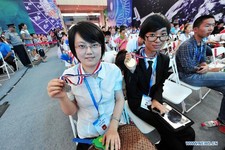 During the 29th Olympics in Beijing, China has outnumbered the US through snatching over 10% of the total gold medals. It could be a persuasive testimony that China is among the top sports power worldwide. However, the country did not achieve recognition in science. On the past years, China made a great headway in sports. In the 1932 Olympics in Los Angeles, it dispatched a six-member delegation but with only one athlete to compete. After 52 years in the 23rd Olympics in the same city, the country bagged 15 gold medals. During the 2004 Athens Olympics, China was ranked second to the United States in the gold table, but it has an overpowering superiority to other countries.
However, in the realm of science, the country has not set up an international status equal to its comprehensive national strength. In various leading international academic magazines or at various international academic conferences, Chinese scholars only had very little influence. During the World’s 20th congress of genetics in Berlin in July, no one from the keynote speakers were Chinese and just two Chinese were to deliver speeches, 1.2% of the total speakers. In the very popular magazine ‘The Cell’, there was no Chinese scholar that published an article starting 1981 until 2004.
Like sports, science also needs a significant policy support in order to boost. In the later years, the government increased the financial input in science and technology. But the smooth development will be hindered.
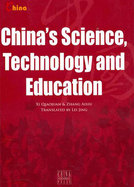 China has made steps in science and technology since the country took on a policy of reform in 1978, according to a Belgian Chinese professor in an interview. The country has made notable developments in science and technology, ranging from rocket launching, space exploration and manned spacecraft to electronics, IT, medicine and chemistry, said Prof. Su Baolian of Namur University in Belgium.
Su began his teaching profession at the university in 1995 and became its life-long professor in 2004, the youngest at the university. In 2007, he received the Aldophe Wetrems Prize from the Belgian Royal Academy of Sciences. He said that high technology is the basis of the design, manufacturing, launching and tracking of spacecraft and rackets, serving as a general indicator of the strength in science and technology of a country.
He added that China's vast achievements in these fields indicate that it is now one of the world leaders in advanced materials science, advanced manufacturing, electronics, computer science, meteorology and optoelectronics. The country’s manned space technology and rocket methods have helped them promoting national pride across the globe. This progress contributes to international space science.
China can now produce an extensive variety of products because of nanotechnology, from the self-cleaning silk kerchiefs and ties, to automatic glass and tiles cleaning machines. Su recalled that in the early 1990s, Chinese scientists were hardly visible in the circles of international science. Today, they are organising international conferences and holding relevant positions in international science organisations.
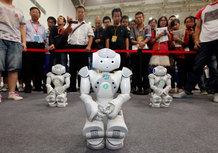 Chinese President Hu Jintao states that developing China into a nation of innovation must be undertaken as its future-oriented major strategy. Hu is also the Communist Party of China (CPC) Central Committee’s general secretary. During the meeting with 3,000 participants, Hu states that the strategy must focus on the economic development in the areas of international science and technology. He said that China should develop its strategic plans of independent innovation and speed up the development of the State innovation mechanism.
Hu described independent innovative competence as the centre of competitiveness. He said that a nation should emphasise independent invention that will lead to the progress and benefit of the world. The president said that China must support the spirit of independent innovation then improve its mechanism for innovation. The state should also advocate innovation by integrating or learning from imported technology.
Hu said that China needs to make great and meticulous effort to promote the importance of high technology, particularly the technologies with academic property rights and auxiliary technologies, which will have a great role in advocating economic growth and restructuring growth patterns. The president said that China made discoveries in several major technologies. The manned space project served to cultivate and train a group of young people and competent space experts and professionals. Several companies, organisations and over 100,000 scientific workers are involved in the project.
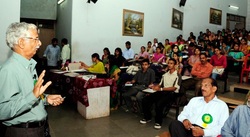 Starting Friday, a three-day seminar on bio-technology will be held at St. Aloysius College, to celebrate 25 years of economically useful and socially relevant research being implemented by the applied biology laboratory of the said school.
Briefing some reporters on Wednesday, K. Rajendra, the organising secretary of the seminar, said “it was for the first time in Karnataka that a first grade college is hosting a national seminar of this magnitude”. Famous biotechnologists from Bangalore, Chennai, Mangalore, Mumbai, Mysore, Patiala, Thrissur, Kasargod, Tuticorin, and the USA will speak about agriculture, cloning, environment, horticulture, diagnostics, health and medicine, as well as information science. C.S. Prakash, the director of the Centre for Plant Biotechnology Research in Tuskegee University will be conducting the keynote address. More than 250 delegates, including students, scientists, and research scholars are expected to partake in the deliberations. The applied biology laboratory was set out by Dr. Leo D'souza in 1976. This laboratory was one of the first to initiate bio-technology research in India.
Rajendra also said that the laboratory is associated to with the Bio-sciences Department of Mangalore University and Dr. Leo is a renowned guide for doctoral studies, having guided six researchers already in completing their own doctoral studies. Elaborating on the accomplishments of the laboratory, Rajendra also mentioned that the laboratory has completed research work on biotechnology for extensive growth of a few economically useful and helpful plants, such as coconut, cashew, as well as endangered, ornamental, and medicinal plants.
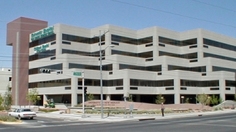 Waneta Tuttle, an active entrepreneur, launched another technology. This time it is a bio-tech start-up which could provide relief to patients suffering from lupus diseases with acute kidney inflammation. In November, Tuttle established the Azano Pharmaceuticals, an Albuquerque-based company, to authorise a treatment that is newly developed by the medical investigators at University of New Mexico Hospital.
The technology was patented by the University of New Mexico’s Science and Technology Corp, though in the case of Azano Pharmaceuticals, it will have to take several years and several millions of dollars in order for it to become a federally-approved medicine for lupus patients. Nevertheless, with Tuttle being in control of the matter, executives of STC are very confident that Azano will basically obtain a venture capital, as well as the management talent it requires to become successful.
STC President and CEO Lisa Kuuttila said, "Tuttle put all the pieces together to make this happen. Everyone is excited about the potential for this treatment. It's still very early in the development process and a lot more needs to be done, but so far, all the testing has been very promising." The bio-tech drug is the initial life-sciences start-up developed by Puente Partners LLC, a business development agency established in 2006 by Tuttle, to augment the ventures in biotechnology. Waneta Tuttle is the CEO and founder of Southwest Medical Ventures.
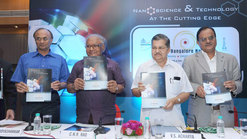 After the announced proposal of a Nano Park in India, the Department of Science and Technology (DST) plans to set up an Institute of Nano Science and Technology in Bangalore. On Saturday, T. Ramasami, DST Secretary told the Press that the Rs. 100 crore shall be committed for the five-year project of the Nano Science and Technology Mission. With an expected 200 researchers, the project shall be among the three great institutes in the country, two of which had been planned in Mohali and Kolkata.
“The institute in Bangalore will be funded by the Department of Science and Technology and partnered by Jawaharlal Nehru Centre for Advanced Scientific Research (JNCASR) and the Indian Institute of Science. The project will be completed in 18 months after permissions are obtained. The State Government had allotted 15 acres of land off Tumkur Road for the institute”, said Dr. Ramasami. According to Dr. Ramasami, nano-textiles, healthcare systems, water purifying, and agriculture emerged as significant fields for nanotechnology applications in the country.
M.N. Vidyashankar, Karnataka’s Secretary of the Department of IT said that a ‘‘Research-Industry Collaboration Hub” or “RICH” was organised to provide platforms for researchers looking for venture capitalists, an industry, and partnerships with investors, as part of the 2007 Bangalore Nano conference and exhibition. “If innovations are not backed by capital investments, they will not translate into technology, products and wealth creation for the country. RICH will bring investors and inventors together.
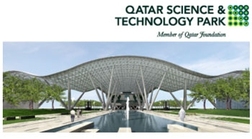 A Science and Technology Park project worth $1 billion, which will be the first across the region, has been launched--the Kuwait Finance House (KFH) announced. The park will house a variety of technology companies to expand market niches and to attract more international science and technology business to the Kingdom. The initiative is expected to boost innovation in scientific research and technology, while also providing a competent environment for the development of Bahrain’s technology sector.
Initially, the Economic Development Board (EDB) and the Kuwait Finance House signed a Memorandum of Understanding to put up a science and technology park. The EDB will oversee the establishment of the project, which will improve the scientific research expertise of the region and will bring intensive diversity to Bahrain’s economy. Osama Al-Khajah, KFH’s Head of Project Development, and Dr. Zakaria Hejres, EDB’s Deputy Chief Executive, signed the memorandum at the press conference conducted at EDB’s headquarters.
The implementation of the project will be divided into three phases, said Al-Khajah. The first phase will involve the infrastructure of the project, followed by the implementation of the science laboratories, lifestyle aspects and educational partnerships during the second and third phases. The Bahrain Science and Technology Park has already dealt partnership with the world’s prestigious universities and institutions, like Sophia Antipolis to establish a global platform for development and research.
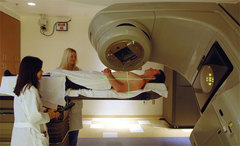 Azaya Therapeutics Inc. licenced a technology, which could be beneficial to treat neck and head cancers, said the company on Wednesday. The technology requires the use of liposomes in delivering the radiation into the neck and head tumours via a direct injection. The officials of the company said that they may able to shrink the tumour, avoid collateral tissue damage, and delay recurrence that frequently accompanies other forms of radiation therapy.
Liposomes are tiny, bubble-like particles, which are made of the same material like in cell membranes. The pharmaceutical industry engineered liposomes decades ago. The company plans to start its phase I clinical trial this early 2010. It licences the technology from the University of Texas Health Science Centre in San Antonio, Texas. Scientists were developing the radiation-infused liposome technology for about six years. Michael T. Dwyer, CEO and president of Azaya, said that it is a good collaborative opportunity for the university as well as for the company.
“They have more than 15 years of expertise working with liposomes and a patent-pending method of using them to deliver radiation to a very specific tumour location”, says Dwyer. “And Azaya has a patented system for producing liposomes quickly and efficiently”, he added. Dwyer also said that the treatment has the potential to address other forms of cancer, such as brain, breast, and prostate cancer.
|










 RSS Feed
RSS Feed